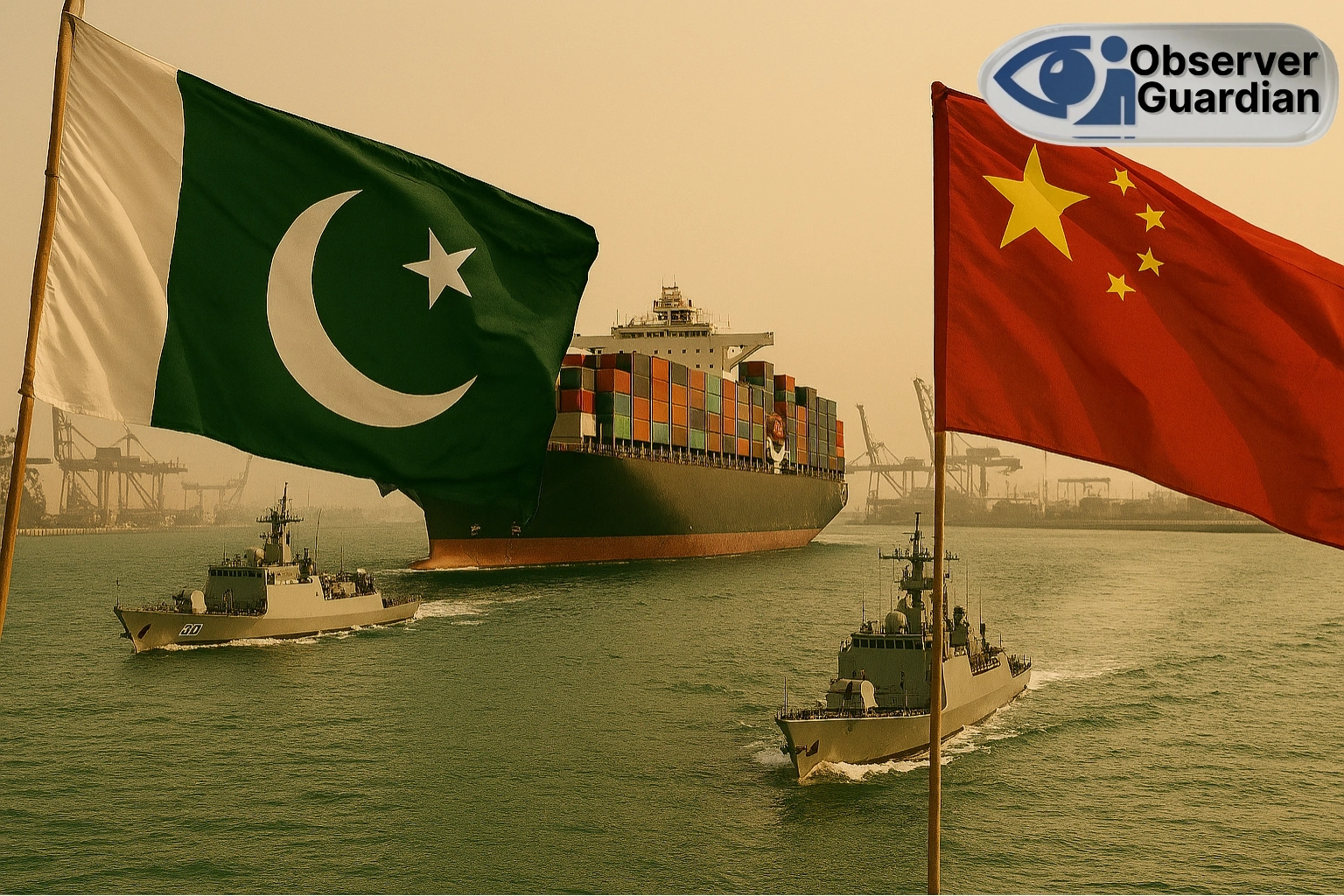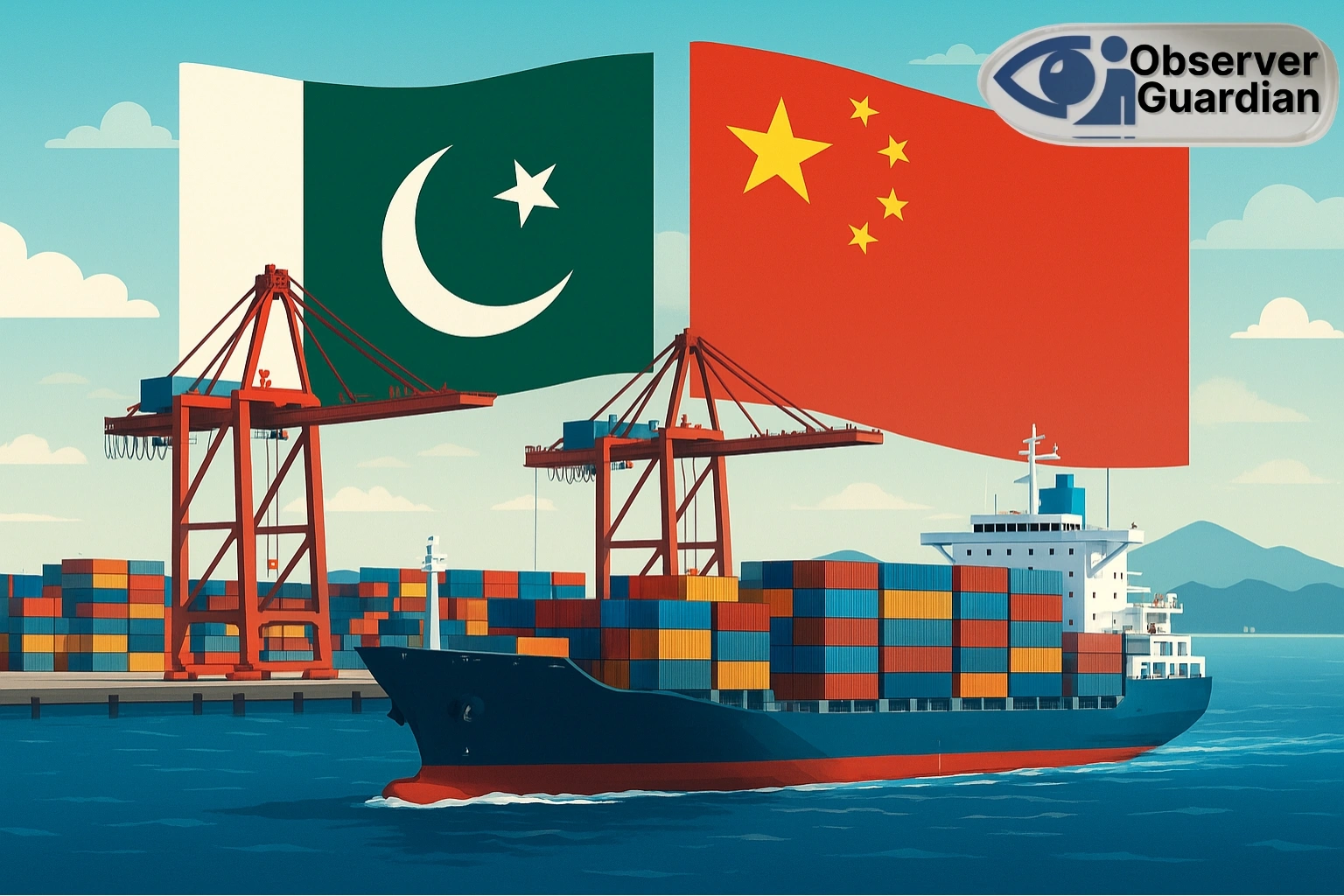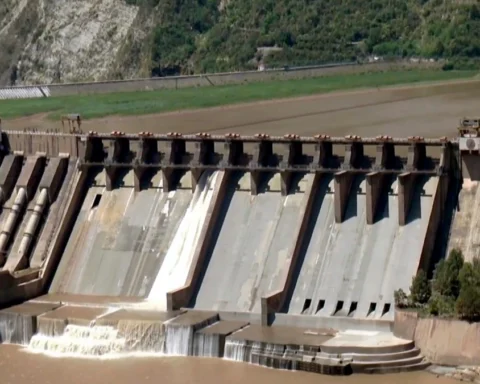Maritime Milestone
In the last few years, the maritime environment has also changed tremendously under the influence of geopolitical developments, economic interest and growth in technology. One of the most remarkable changes is the strategic alliance between China and Pakistan which is aimed at developing its maritime capacity and the development of an effective international shipping network. Besides the two countries, this relationship is crucial as it has a wider implication for international trade and international security.
The shipping industry has been one of the key components of international trade as it acts as a backbone of trade, growth and prosperity. With the new reality of an increasingly interconnected world, maritime routes and ports now have an importance to them and thus the countries are engaging in cut throat competition to gain strategic advantages over others in the shipping and logistics environments. In this regard, the relationship that exists between Pakistan and China can be termed as an important development not only to the regional maritime realms but in the global shipping scene as well.
Geographically, Pakistan has held a strategic location bordering South Asia, Central Asia and the Middle East. It is located on the coast of the Arabian Sea, which has direct access to major shipping routes and therefore, the trade and investments are attracted to its location. Nonetheless, strategic benefits notwithstanding, there are several constraints that have afflicted Pakistan in fully developing its maritime potential, among them being infrastructural gaps, security, and port facilities investment deficiency. Considering these problems, Pakistan has attempted to strengthen its naval forces by cooperating with other countries, with China becoming a major partner.
China has risen to be a global economic powerhouse due to its ambitious Belt and Road Initiative (BRI). The vision of this project is to introduce better connectivity and collaboration between the nations within Asia, Europe, and other regions, which is more related towards infrastructure creation and trade. In this vision, the China-Pakistan Economic Corridor (CPEC) has been created, which is a flagship project of the BRI framework. CPEC will construct a road, railway, and pipeline network between Gwadar Port in Pakistan and the Xinjiang region of China thus ensuring the transfer of goods and resources between the two countries.
China-Pakistan relations are not only economic, but also strategic and security related. Piracy, smuggling, and terrorism are common threats in the maritime sector that both countries share and which require joint actions to provide the safety and security of the shipping routes. By conducting military drills in the sea and sharing intelligence programs, Pakistan and China are trying to raise their abilities to secure their seaways, thus providing a more stable global environment to conduct trade and investment operations.
In addition, the alliance can be described as having a vision of technological development in shipping. With the changes in the global maritime industry, both countries are spending on modernizing their fleets and ports facilities to become efficient and sustainable. This also involves incorporation of digital technologies and automation in the operations in ports, which are essential to address the needs of modern shipping activity.
Pakistan and China are confident to become competitive actors in the global shipping market by improving their technological capacities.
Effects of such a strategic alliance go beyond bilateral cooperation; they also have great impact on regional and global trade. The deepening of capabilities of the Pakistan and Chinese maritime forces may lure shipping traffic and foreign investment to the countries of origin or destination in the region, which would redefine trade patterns and alliances. This change is potentially posing a reorganization of the international shipping environment especially as other states aim to participate in the expanding powers of Pakistan and China in regard to maritime policies and activities.
The Economic Corridor of China-Pakistan (CPEC) Strategic Importance
The China-Pakistan Economic Corridor (CPEC), which falls under the Belt and Road Initiative (BRI) by China, is the core conceptualization of this alliance. CPEC is the vision which has linked Xinjiang region in China with the Gwadar Port in Pakistan to enable the two regions to engage in trade and investment. The corridor is sure to change the Pakistani economy, providing workplaces, better infrastructure, and connectivity.
Economic Benefits
The CPEC has numerous economic advantages. The Asian Development Bank report (2020) presents the findings that CPEC will further boost the Pakistan GDP by 1.5 percent a year and generate thousands of jobs across all sectors such as development, energy, and transport. It is also projected that the opening of the Gwadar Port will present Pakistan as one of the central actors in the trade of the region, enabling it to function as a pathway for both incoming and outgoing products to and from Central Asia and beyond.
Strengthening Maritime Security
There is also interest in the strategic alliance in terms of improving maritime security in the region. Threats like piracy, smuggling, and acts of terrorism are shared between these two countries almost to the same degree. By collaborating on maritime security, Pakistan and China aim at ensuring that their shipping lines remain safe and they protect the interests of the nation in initiatives that relate to major areas of trading interests. Such cooperation involves mutual naval drills, exchange of intelligence, and development of maritime forces on the Pakistani side.
Combined Naval Training
Over the past few years, Pakistan and China have engaged in a number of joint naval exercises, including the recently concluded one named Sea Guardian, with the aim of enhancing the interoperability of their respective naval forces. Not only do these exercises improve operational readiness, but they are also an investment in building more solid relationships between the two military establishments of the respective nations (Pakistan Navy, 2021).
Advancements in Technologies in Shipping
One area that also characterizes Pakistan and China’s partnership is technological development in the shipping sector. Due to the evolution of the global shipping industry, the two countries are investing in the modernization of their fleets and port facilities. This involves the introduction of digital technologies, automation, and sustainable practices to achieve efficiency and lessen environmental effects.
Investment in Port Infrastructure
China has invested heavily in the modernization of the Gwadar Port infrastructure, including building new terminals and logistics infrastructure. The development is essential for accommodating larger ships and raising freight traffic, making Gwadar a competitive node in the multi-nation shipping system (China Overseas Port Holding Company, 2022).
Global Implications on Trade
Pakistan and China are strategic allies with the potential to restructure global trade dynamics. With increased capability in the maritime sector, the two countries will attract greater shipping traffic as well as investment. Such a change may prompt a reorganization of trade patterns and alliances, especially given increasing tensions elsewhere in the major zones of maritime traffic.
Regional Influence
The intensifying role of Pakistan and China in the shipping industry is also reflected in their vow to enhance connections with other nations in the maritime Silk Road. Pakistan and China are driven by the need to establish a chain of cooperative bonds with other countries in Southeast Asia, the Middle East, and Africa to support the projected strategic developments in their nations (Zhang, 2023).
Conclusion
The South Asian play by Pakistan and China can be regarded as one of the major milestones in the history of world shipping. Initiatives such as CPEC, naval exercises, and maritime infrastructure investments are all geared towards the two countries becoming centerpieces in an increasingly integrated world.
With all these implications of their collaboration, one thing that is likely to be felt in trade lanes and geopolitical environments as they sail through this new dawn in global shipping is that the partnership will not run out of steam.
References
- Asian Development Bank. (2020). Economic Impact of the China-Pakistan Economic Corridor. Retrieved from ADB
- China Overseas Port Holding Company. (2022). Gwadar Port Development and Future Prospects. Retrieved from COPHC
- Ali, L., & Khan, M. Z. (2024). Technological advancement and Pakistan’s maritime security strategy in the Indo-Pacific Ocean region: Challenges and prospects. Journal of Nautical Eye and Strategic Studies, 4(1), 73-87.
- Khan, K., Uddin, I., & Maghfoor Ullah, M. A. (2024). PAK-CHINA STRATEGIC PARTNERSHIP AND ITS IMPACT ON REGIONAL POWER STRUCTURE. ISAR J Arts Humanit Soc Sci, 2 (8), 1, 9.
- Kardon, I. B., Kennedy, C. M., & Dutton, P. A. (2020). China Maritime Report No. 7: Gwadar: China’s Potential Strategic Strongpoint in Pakistan.
- Khan, M., Chang, Y. C., & Bibi, A. (2024). Navigating Pakistan’s Maritime Industry potential in context of blue economy: An analysis of the necessity for ratification of maritime labour convention 2006. Marine Policy, 165, 106150.
- Rasool, G., Mangi, S. N., Ahmed, A., & Charan, F. (2024). Examining the odyssey of China Pakistan Economic Corridor: A historical perspective. Zhongguo Kuangye Daxue Xuebao, 29(3), 117-129.
- Chakma, B., & Dai, X. (Eds.). (2022). The Belt and Road Initiative and the Politics of Connectivity: Sino-Indian Rivalry in the 21st Century. Springer Nature.
- Sengupta, A. (2024). Globalization and the geopolitics of multi-layered connectivity. In India’s Eurasian Alternatives in An Era of Connectivity: Historic Connects and New Corridors(pp. 117-156). Singapore: Springer Nature Singapore.
Disclaimer: The views and opinions expressed in this article are exclusively those of the author and do not reflect the official stance, policies, or perspectives of the Platform.









